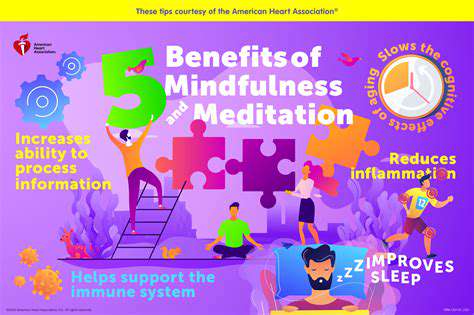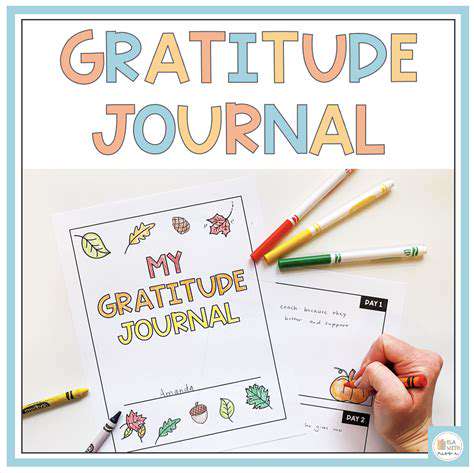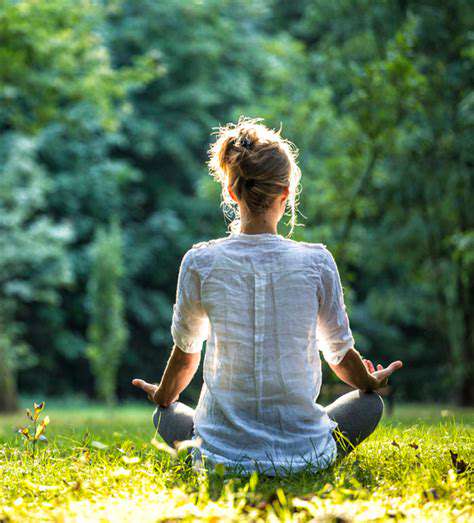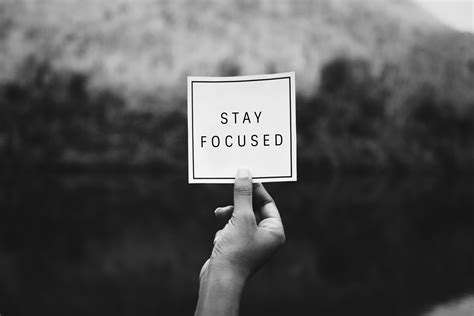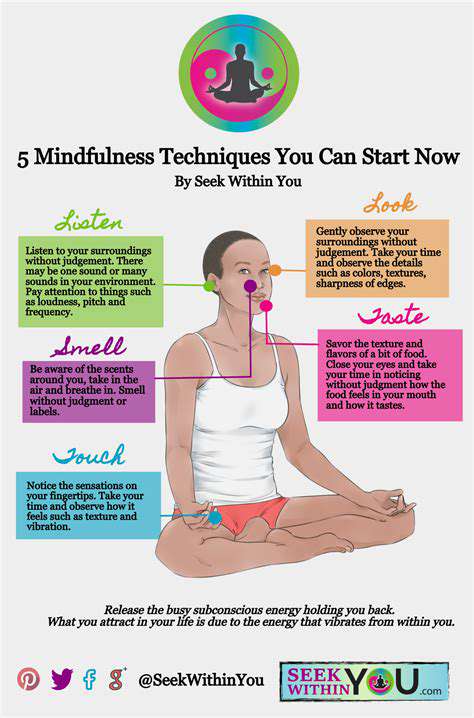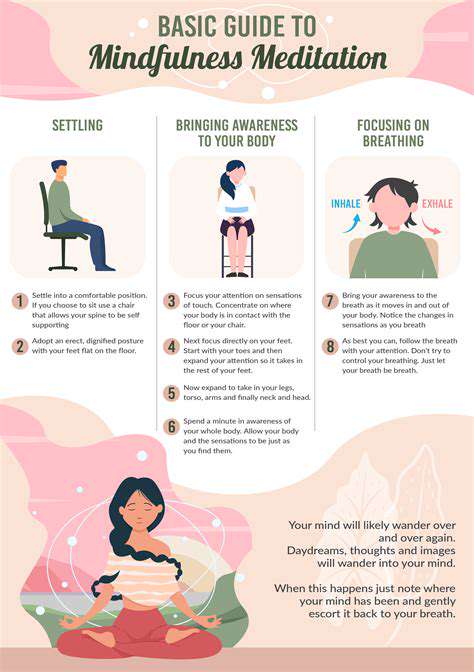Effective Strategies to Practice Mindfulness Daily
Why Mindfulness Matters

Understanding Mindfulness
Mindfulness is the practice of being present and fully engaging with the current moment. It encourages us to observe our thoughts, feelings, and sensations without judgment.
This practice can lead to improved emotional regulation, greater focus, and an enhanced ability to cope with stress. By paying attention to the here and now, we can cultivate a deeper understanding of ourselves and our surroundings.
Simple Techniques to Incorporate Mindfulness
One effective way to practice mindfulness is through focused breathing exercises. Taking a few moments each day to concentrate on your breath can ground you and help clear your mind.
Additionally, mindfulness can be integrated into everyday activities, such as eating, walking, or even washing dishes. By staying fully engaged in whatever task you are doing, you can enhance your experience and appreciation for the small things in life.
The Role of Meditation
Meditation is one of the most recognized methods of practicing mindfulness. It often involves setting aside time for stillness and contemplation, allowing thoughts to come and go without attachment.
Regular meditation can deepen your mindfulness practice and strengthen your ability to remain present in your daily life. Even a short period of meditation can yield significant benefits, such as reduced anxiety and increased emotional resilience.
Overcoming Challenges in Mindfulness Practice
Despite its benefits, many people struggle to maintain a consistent mindfulness practice. Common barriers include a busy lifestyle, distractions, and self-judgment.
Recognizing these challenges is the first step in overcoming them. By setting realistic goals and creating a supportive environment, you can cultivate a sustainable mindfulness practice that fits into your daily routine.
Simple Ways to Incorporate Mindfulness into Your Routine
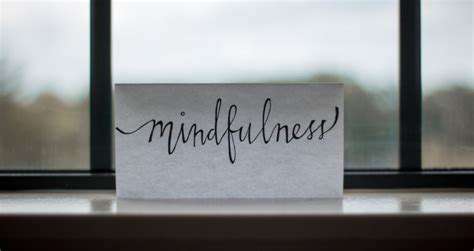
Simple Ways to Incorporate Mindfulness into Your Routine
Starting your day with a few moments of mindfulness can set a positive tone for the rest of the day. By taking just five minutes to breathe deeply and focus on the present, you can cultivate a sense of calm and clarity. This can involve sitting quietly, observing your breath, or simply listening to the sounds around you.
Additionally, integrating mindfulness into daily routines can significantly enhance your practice. For example, try to be fully present during your morning coffee or tea ritual by savoring the aroma and taste, rather than rushing through it.
Parking mindfulness into mundane activities like washing the dishes or walking can also be beneficial. The key is to engage all your senses and remain attentive to the experience, fostering a deeper connection to the moment.
Setting Reminders and Creating a Mindfulness Space
To help make mindfulness a consistent part of your day, consider setting reminders for mindful moments. These cues can be anything from a phone alarm to sticky notes placed around your space. They serve as gentle prompts to pause and reflect throughout your day, increasing your overall mindfulness practice.
Creating a designated mindfulness space in your home can also enhance your practice. This space should be comfortable and free from distractions, providing an inviting environment where you can focus on meditation or quiet reflection.
Finally, using technology to your advantage can keep you engaged in mindfulness. There are many apps available that offer guided meditations and mindfulness exercises, which can serve as helpful tools to incorporate into your daily routine. By utilizing these resources, you can reinforce your commitment to practicing mindfulness regularly.
Creating a Mindfulness Practice That Works for You
Understanding Your Current Routine
Before establishing a mindfulness practice, it’s essential to understand your current daily routine. Take some time to reflect on how you spend your day and identify moments that could benefit from mindfulness. Consider keeping a journal for a week to track your thoughts, feelings, and activities.
Evaluate your regular schedule. Are there specific times when you feel more stressed or overwhelmed? Recognizing these patterns can help you identify ideal moments to integrate mindfulness into your day.
Analyze your environment as well. Certain spaces may encourage a calm mindset, while others might be distracting. Acknowledge where you feel most present and where improvements could be made.
Discuss your current habits with a friend or family member. Sharing insights can provide new perspectives on how to approach mindfulness effectively and help you stay accountable.
By understanding your current routine, you create a solid foundation upon which to build your mindful practices, recognizing the opportunities for growth and enhancement.
Setting Realistic Goals
When creating a mindfulness practice, it’s crucial to set realistic and achievable goals. Start with small, manageable goals, such as practicing mindfulness for just five minutes a day. Gradually increase this time as you feel more comfortable.
Define what mindfulness means for you personally. Whether it’s through meditation, breathing exercises, or mindful walking, clarifying your preferences will guide your practice.
Incorporate mindfulness into existing activities. For instance, focus on your breath while washing dishes or practice gratitude during your morning coffee. This can make integration into your life more seamless.
Allow flexibility within your goals. It’s okay if some days feel more challenging than others. Remember that mindfulness is a practice, and it’s important to be patient and forgiving with yourself.
By setting realistic goals, you foster a sustainable practice that grows with you over time, leading to enhanced benefits and a deeper connection to mindfulness.
Exploring Various Mindfulness Techniques
There are numerous techniques you can explore to enhance your mindfulness practice. Meditation is often the first method that comes to mind. Consider different styles, such as guided meditation, loving-kindness meditation, or transcendental meditation.
Breath awareness is another powerful technique. Spend a few moments focusing solely on your breath—notice its rhythm, how it feels entering and leaving your body, and how it connects you to the present moment.
Mindful movement practices, such as yoga or tai chi, can also be beneficial. These activities encourage you to connect with your body and cultivate awareness through slow, intentional movements.
Journaling can serve as an effective mindfulness technique. Dedicate time to write about your thoughts and feelings, which helps to process emotions and bring clarity to your mind.
Ultimately, exploring various mindfulness techniques allows you to discover what resonates with you, making it easier to maintain a practice that feels enriching and fulfilling.
Integrating Mindfulness Into Daily Life
To truly reap the benefits of mindfulness, it’s crucial to integrate it into your daily life. Start by creating reminders throughout the day. Use apps or sticky notes to prompt you to take a few mindful breaths, especially during busy moments.
Establish specific times for your mindfulness practice, such as first thing in the morning or during your lunch break. Consistency helps make mindfulness a natural part of your routine.
Practice mindful listening. Engage fully when having conversations with others, focusing on understanding rather than responding. This practice not only enhances your mindfulness but also strengthens your relationships.
Incorporate mindfulness during transitions between tasks. For example, take a moment to breathe and reset your mind after completing one task before moving on to the next.
By intentionally integrating mindfulness into various aspects of your daily life, you cultivate a mindset that promotes peace, clarity, and overall well-being.
